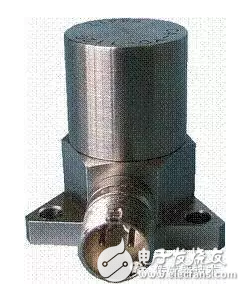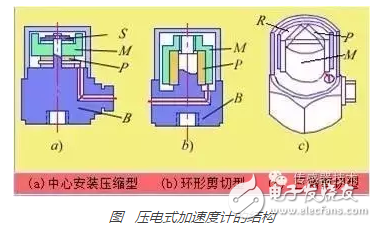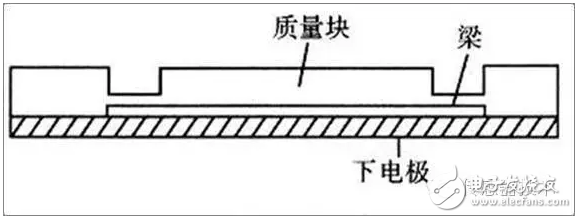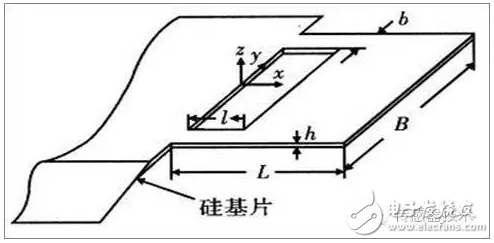Acceleration is a physical quantity that describes how fast an object changes in speed. By measuring the acceleration due to gravity, you can calculate the tilt angle of the device relative to the horizontal plane. By analyzing dynamic acceleration, you can analyze how the device moves. In order to measure and calculate these physical quantities, an acceleration sensor is generated. Accelerometer An acceleration sensor is an electronic device that measures acceleration and converts acceleration into electrical signals. Acceleration is the force that acts on an object during acceleration, just like gravity, or gravity. Acceleration can be a constant, such as g, or a variable. There are two types of accelerometers: one is an angular accelerometer, which is improved by a gyroscope (angular velocity sensor). The other is a line accelerometer. Acceleration sensors can be used in industrial control, instrumentation; handle vibration and shaking, toys, mouse; car brake start detection, alarm system; structure, environmental monitoring; engineering vibration measurement, geological exploration, seismic detection; railway, bridge, large Vibration testing and analysis of dams; dynamic characteristics of high-rise building structures and safety and vibration reconnaissance. According to Newton's second law: A (acceleration) = F (force) / M (mass) Simply measure the force F to get the acceleration of a known mass object. By using electromagnetic force to balance this force, the corresponding relationship between force and current (voltage) can be obtained. The acceleration sensor is designed by this simple principle. Therefore, the essence of the acceleration sensor is that the sensitive components inside the sensor are deformed by the force, and the corresponding acceleration signal is obtained by measuring the deformation and converting the voltage into a voltage output by the relevant circuit. Acceleration sensors are further divided into four types according to the working principle: Piezoelectric accelerometers work based on the piezoelectric effect of piezoelectric crystals. When some crystals are deformed by force in a certain direction, polarization occurs inside, and opposite signs are generated on the two surfaces. When the external force is removed, it returns to the uncharged state. Called the "piezoelectric effect." A crystal having a "piezoelectric effect" is called a piezoelectric crystal. Commonly used piezoelectric crystals are quartz, piezoelectric ceramics, and the like. When the accelerometer is vibrated, the force that the mass is applied to the piezoelectric element also changes. When the measured vibration frequency is much lower than the natural frequency of the accelerometer, the change in force is proportional to the measured acceleration. Figure piezoelectric accelerometer structure S is the spring M is the mass B is the base P is the piezoelectric element R is the clamping ring Figure a is a centrally mounted compression type, the piezoelectric element-mass-spring system is mounted on a circular center post that is connected to the base. This structure has a high resonance frequency. However, when the base B is connected to the test object, if the base B is deformed, it will directly affect the output of the pickup. In addition, changes in the test object and ambient temperature will affect the piezoelectric element and cause the pre-tightening force to change, which may cause temperature drift. Figure b is a toroidal shear type in which the piezoelectric element is clamped to the center column of the triangle by a clamping ring. When the accelerometer senses axial vibration, the piezoelectric element is subjected to shear stress. This structure has excellent isolation against deformation and temperature changes of the base, high resonance frequency and good linearity. Figure c is a triangular shear shape, simple structure, can be made into a very small, high resonance frequency accelerometer, the annular mass is glued to the annular piezoelectric element mounted on the center pillar. Since the binder softens as the temperature increases, the maximum operating temperature is limited. Piezoelectric accelerometers are the most widely used vibration measuring sensors because of their large dynamic range, wide frequency range, ruggedness, low external interference, and the ability of piezoelectric materials to generate charge signals without any external power supply. Although the piezoelectric accelerometer has a simple structure and a long history of commercial use, its performance parameters are closely related to material characteristics, design and processing technology, so the actual parameters of the performance of similar sensors sold on the market and their stability. And the consistency is very different. Compared with piezoresistive and capacitive, the biggest drawback is that piezoelectric accelerometers cannot measure signals at zero frequency. The piezoresistive accelerometer is the earliest developed silicon micro-acceleration sensor (based on MEMS silicon micromachining technology). The elastic component of the piezoresistive accelerometer generally uses silicon beam plus mass, and the mass is supported by cantilever beam and on the cantilever beam. Make resistors and connect them to the measuring bridge. Under the action of inertial force, the mass moves up and down, and the resistance of the resistance on the cantilever beam changes with the action of the stress, which causes the output voltage of the measuring bridge to change, thereby measuring the acceleration. Figure piezoresistive acceleration sensor schematic There are many typical structures of piezoresistive silicon micro-acceleration sensors, such as cantilever beam, double-arm beam, 4-beam and double island-5 beam. The structural form and size of the elastic element determine the sensitivity, frequency response, range, etc. of the sensor. The mass can make the stress on the cantilever beam larger under the action of less acceleration, and improve the output sensitivity of the sensor. At large accelerations, the effect of the mass may cause the stress on the cantilever to exceed the yield stress and the deformation to be too large, causing the cantilever beam to break. For this reason, the high gn-value acceleration is intended to be a single-armed beam and a double-armed beam with the same mass and beam thickness as shown in the figure. Figure beam structure Based on the world's leading MEMS silicon micromachining technology, piezoresistive accelerometers are small in size, low in power consumption, easy to integrate in various analog and digital circuits, and are widely used in automotive crash experiments, test instruments, equipment vibration monitoring, etc. field. The sensitive core of the strain piezoresistive accelerometer is a resistance measuring bridge made of semiconductor material, and its structural dynamic model is still a spring mass system. The development of modern micromachining manufacturing technology has made the design of piezoresistive sensitive cores very flexible to suit a variety of different measurement requirements. In terms of sensitivity and range, from low-sensitivity and high-range impact measurement to DC high-sensitivity low-frequency measurement, there are accelerometers in the form of piezoresistive. At the same time, the piezoresistive accelerometer can measure the frequency range from DC signal to high frequency measurement with high stiffness and measurement frequency range up to several tens of kilohertz. The ultra-small design is also a bright spot for piezoresistive sensors. It should be noted that although the design and application of the piezoresistive sensitive core is very flexible, it is generally used in a smaller range than a piezoelectric sensor for a particular design of a piezoresistive core. Another disadvantage of piezoresistive accelerometers is that they are greatly affected by temperature, and practical sensors generally require temperature compensation. In terms of price, the cost price of piezoresistive sensors used in large quantities has great market competitiveness, but the manufacturing cost of special sensitive cores will be much higher than that of piezoelectric accelerometers. Piezoresistive accelerometer High Current Slip Ring,Encoder Servo Motor,Connector Electrical,Rotating Electrical Connectors Dongguan Oubaibo Technology Co., Ltd. , https://www.sliprob.com




